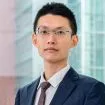Sufficiency of disclosure is a cornerstone of patent law and is part of a "patent bargain" for providing a limited-term monopoly over an invention. In exchange, the inventor or patentee has to teach, in the patent specification, how to work or make the invention so that the public can learn from and eventually build on this knowledge. The Singapore Patents Act stipulates that a specification must disclose an invention in a manner which is clear and complete for the invention to be performed by a skilled person, and insufficient disclosure is a ground for patent revocation in Singapore. In IIa Technologies Pte Ltd v Element Six Technologies Ltd [2023] SGCA 5, the Court of Appeal clarified the requirements for sufficiency under Singapore patent law.
Background
Element Six Tech Ltd and IIa Tech Pte Ltd are competitors in the production of synthetic diamonds grown using chemical vapour deposition ("CVD"). The former is part of the De Beers Group of diamond producers while the latter is a Singapore company established in 2005. In 2016, Element Six filed suit against IIa, claiming infringement of two of its Singapore-registered patents, No. 115872 ("SG 872") and 110508 ("SG 508"). In its defence, IIa filed a counterclaim disputing the validity of both patents and seeking their revocation.
In Element Six Technologies Ltd v IIa Technologies Pte Ltd [2020] SGHC 26, the High Court revoked SG 508 for lacking novelty and inventive step. However, SG 872 was found to be valid and specific claims in that patent were found to be infringed by IIa. IIa filed an appeal to challenge the Judge's decision on validity and infringement, which is the subject of the present case.
Claim 1 and claim 62 of SG 872 were the pivotal claims in dispute. Claim 1 is directed to a CVD single crystal diamond material exhibiting at least one of eight quantifiable optical properties. One of these properties is characterised by the parameter δ and the values it may take. Claim 62 is directed to a method of growing the diamond material in the product claims and includes providing a synthesis atmosphere containing 300 ppb to 5 ppm nitrogen. IIa contended that both claims 1 and 62 did not fulfil the sufficiency requirement.
Law of sufficiency in Singapore
The Court of Appeal took the opportunity to set out general principles applicable to the legal requirement of sufficiency in Singapore. First, the burden of proving insufficiency rests on the party challenging the validity of a registered patent. Second, the assessment of sufficiency proceeds in two steps:
- the Court identifies the invention and decides what it claims to enable a person skilled in the art (PSA) to do, and
- the Court asks whether the specification enables him to do it. The specification must enable the invention to be performed by the PSA over the full breadth of the monopoly claimed.
The judges then described three different types of insufficiencies under English and Singapore law.
Classical insufficiency applies when the specification does not enable a PSA to perform the full breadth of a claim without undue effort.
Biogen insufficiency (named after Biogen v Medeva [1997] RPC 1) arises when the claim extends to embodiments which exceed the technical contribution to the art made by the invention. The example cited is a claim to "a heavier than air flying machine" in a patent which only discloses how to make an airplane. The breadth of such a claim is excessive as it covers an entire class of products some of which may be manufactured by processes wholly different from the teachings of the patent. Biogen insufficiency derives from English case law, but the Singapore court presently does not recognise this type of insufficiency.
Uncertainty is a form of insufficiency that the Court recognised for the first time under Singapore patent law. Uncertainty arises when the PSA does not know how to determine whether a particular product or process is within or outside the scope of a claim, even after employing the common general knowledge and applying the normal process of claim construction. This is distinct from a lack of clarity in a claim, which does not per se amount to uncertainty in the context of insufficiency. To result in uncertainty giving rise to insufficiency, the lack of clarity in claim language must leave the PSA unclear as to how to ascertain when a particular product or process embodies the subject matter of a claim.
Judgement
The Court of Appeal first established that each product claim in SG 872 covered a class of products, each product possessing a different combination of physical properties. The analysis then shifted to whether the specification enabled the PSA to produce every diamond falling within the scope of each of the product claims.
Claim 62 was classically insufficient
The Court of Appeal recognised that there are other growth conditions (e.g., gas flow rate, temperature and pressure) that affect the nitrogen level in the synthesis atmosphere and which influence the properties of the diamond produced under the method. However, the judges found that claim 62 and the specification of SG 872 failed to teach a general principle that enables the PSA to understand the relationship between the other growth conditions and nitrogen concentration. Moreover, there is no teaching of a general principle that enables a PSA to determine how to calibrate the other growth conditions to grow a diamond of a specific quality. Consequently, the Court of Appeal found that claim 62 and all the dependent method claims were classically insufficient. Since there was no teaching of an alternative method of producing a CVD diamond of claim 1, and such a method is unlikely to be within the PSA's common general knowledge, all the product claims of SG 872 were also held to be classically insufficient.
As all the claims were invalid for classical insufficiency, the judges revoked the entirety of SG 872. The judges nevertheless proceeded to consider whether any or all of the claims in SG 872 were also invalid due to uncertainty.
Claim 1 was uncertain
The Court of Appeal found that claim 1 of SG 872 was uncertain because a PSA would not know what test to apply to ascertain whether a particular CVD diamond satisfies the ranges of values of δ given in claim 1. The instrument specified in SG 872 for this purpose generates multiple δ values and there is no direction as to which value should be selected. The evidential burden was on Element Six to show that the PSA would know of a workable solution to overcome this either based on the teachings of SG 872 or based on common general knowledge. However, the evidence adduced by Element Six failed to convince the judges.
Although the δ parameter was only specified in two of the eight limbs of claim 1, the result of the uncertainty arising from this parameter was that the PSA would not be able to determine whether a given diamond fell under the scope of the class of products in claim 1. The entire claim was thus uncertain. As the scope of all other product and process claims were defined by reference to claim 1, the entirety of SG 872 was also found to be uncertain.
Conclusions
The Court of Appeal's decision highlights the importance of claim sufficiency in Singapore. Patentees have to ensure that the specification adequately enables the full scope of the claims in order to fulfil their end of the patent bargain. This case highlights how Singapore is strengthening its intellectual property regime, developing upon established jurisprudence to clarify the trade-off between the fair scope of protection afforded to patentees and the right of third parties to understand how to perform the invention.
The full judgement can be found here.
The content of this article is intended to provide a general guide to the subject matter. Specialist advice should be sought about your specific circumstances.


